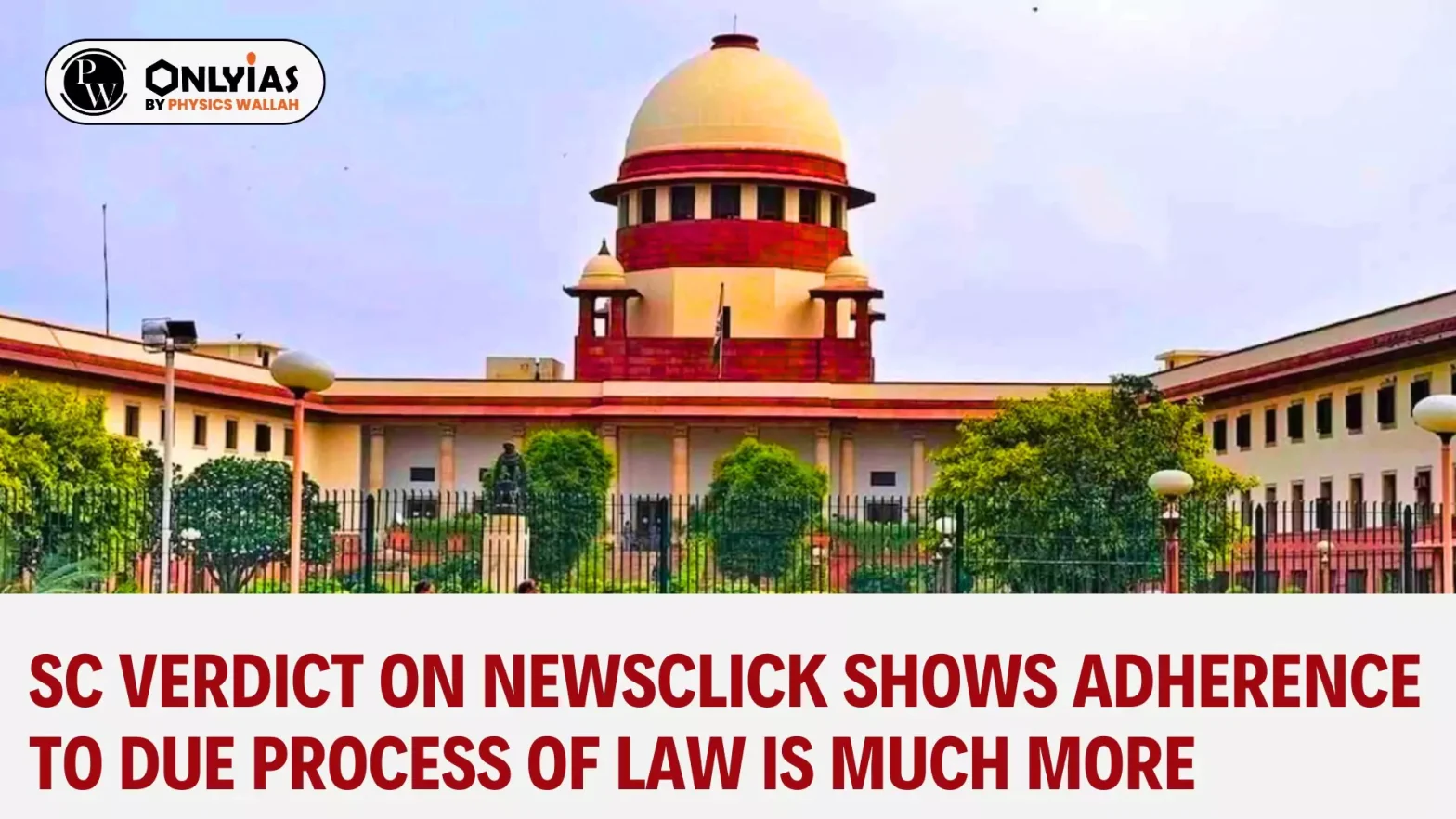![]() 18 May 2024
18 May 2024

The Supreme Court in a recent judgment highlighted the importance of due process of law.
| Relevance For Prelims: Rule Of Law Vs Right To Liberty, Due Process of law, Procedure Established by Law, and BASIC STRUCTURE OF CONSTITUTION.
Relevance For Mains: Evolution of Basic Structure Doctrine. |
|---|
| Must Read | |
| NCERT Notes For UPSC | UPSC Daily Current Affairs |
| UPSC Blogs | UPSC Daily Editorials |
| Daily Current Affairs Quiz | Daily Main Answer Writing |
| UPSC Mains Previous Year Papers | UPSC Test Series 2024 |

<div class="new-fform">
</div>